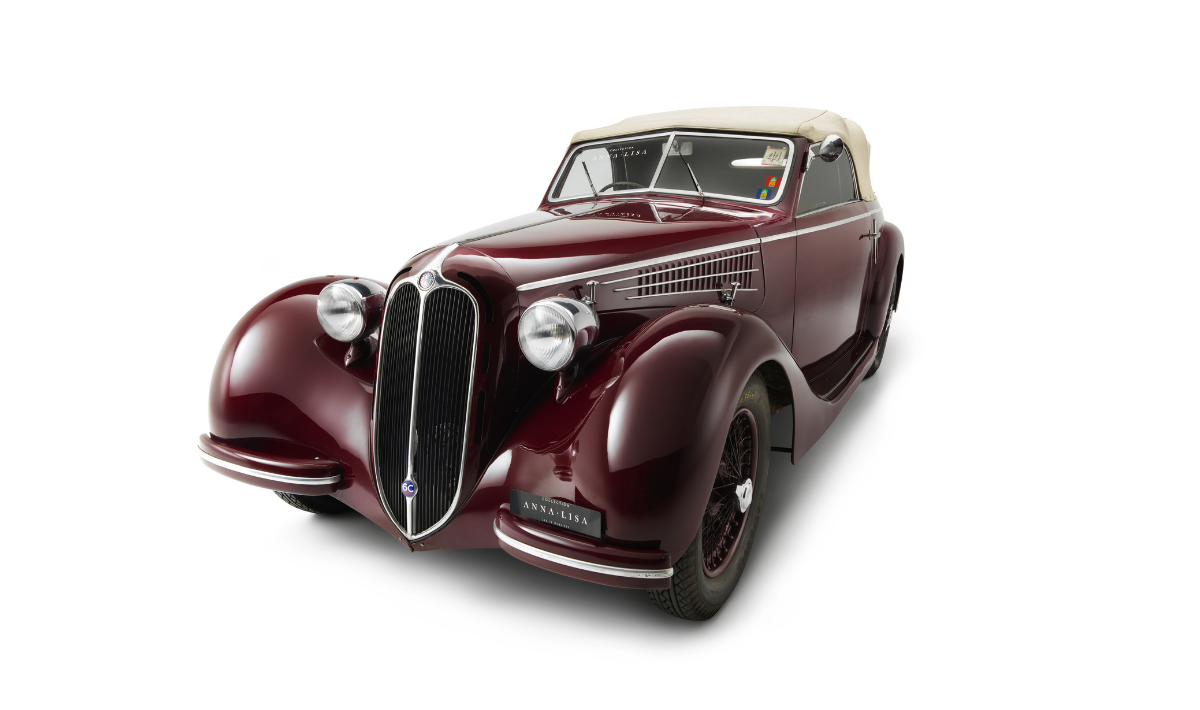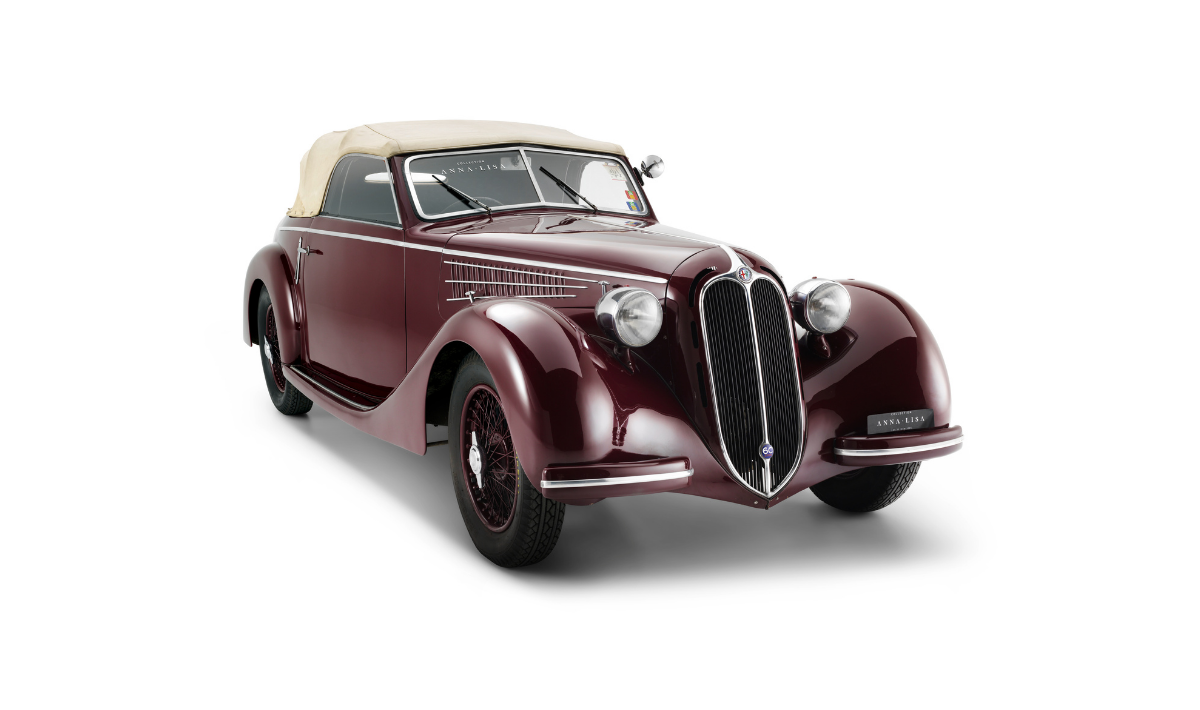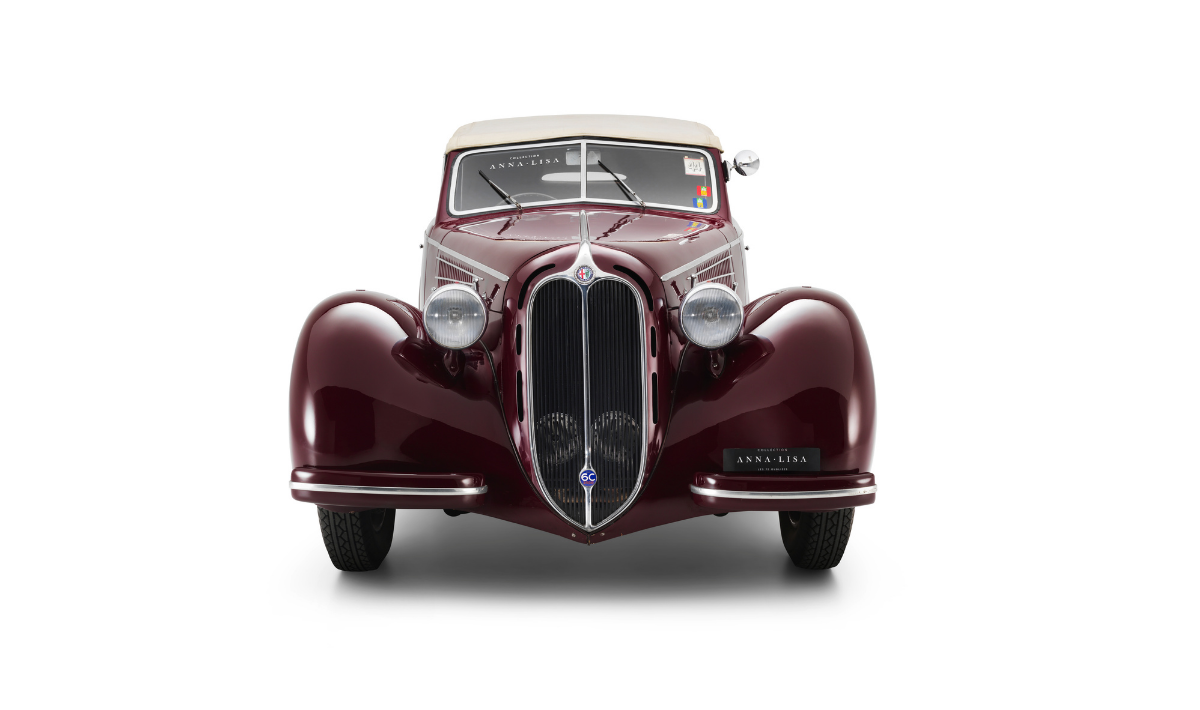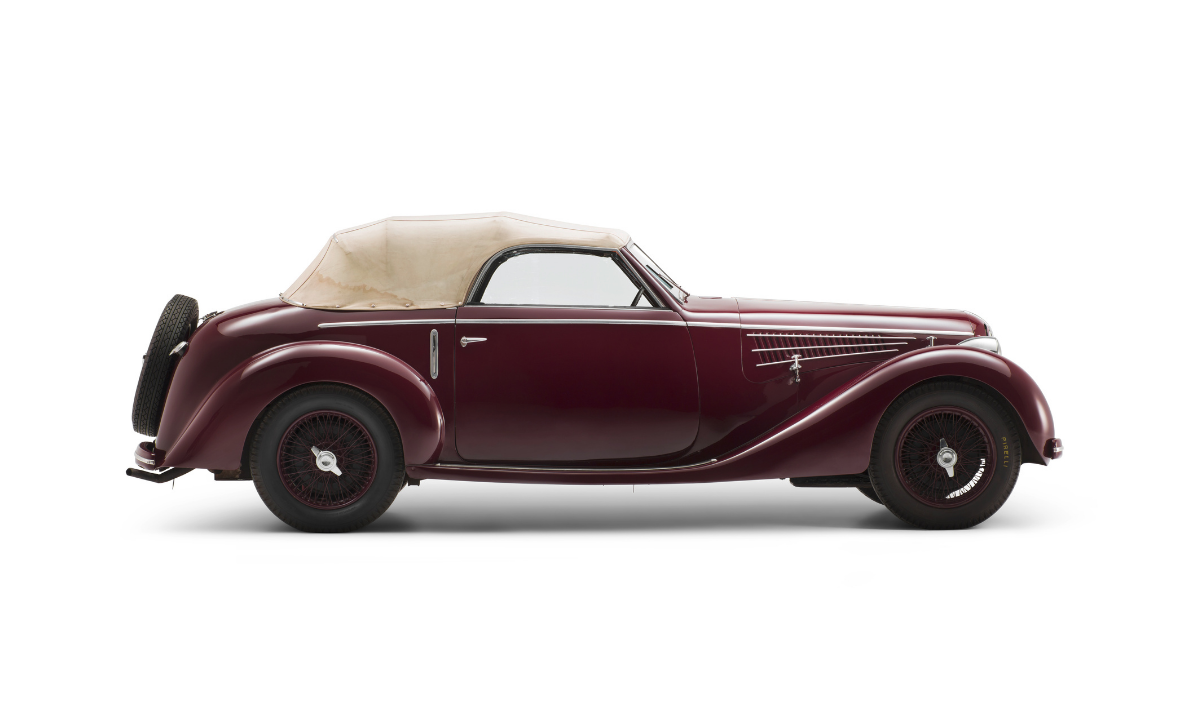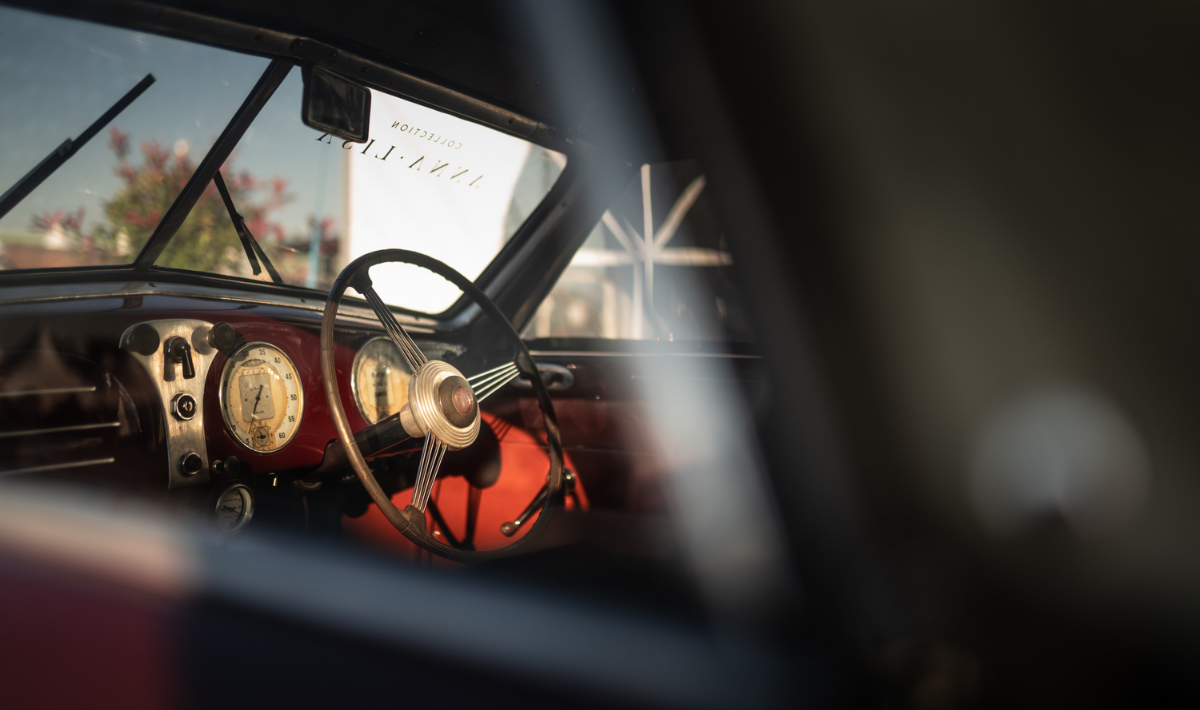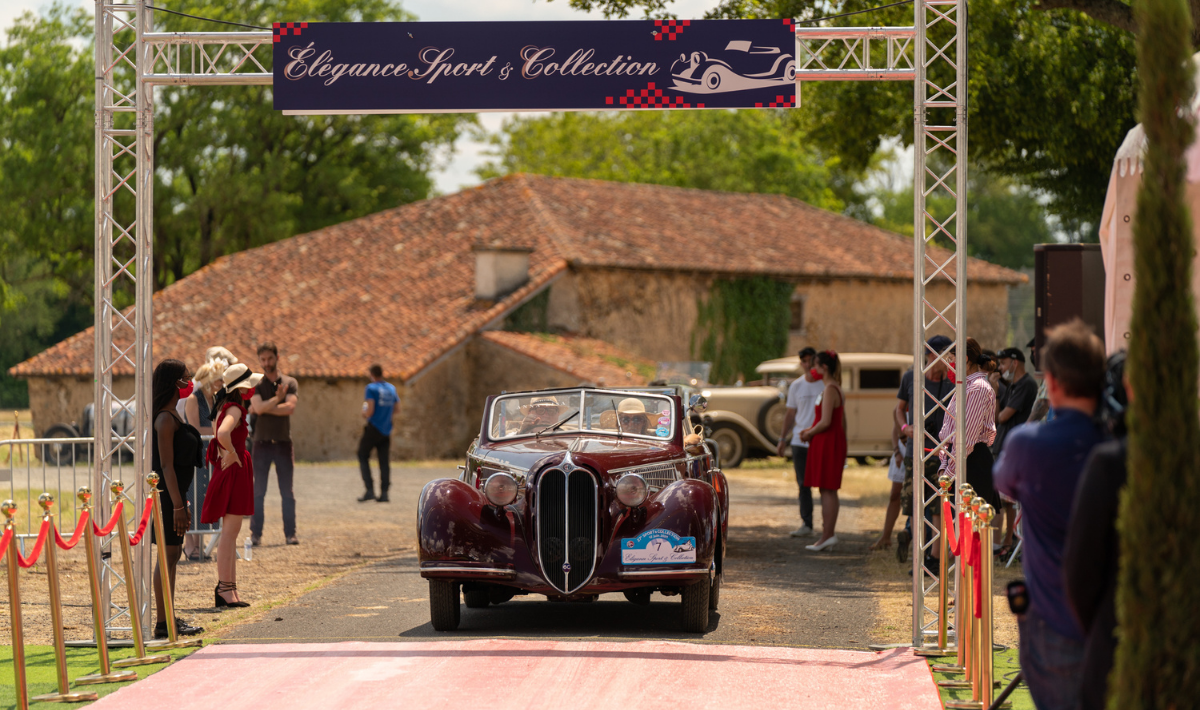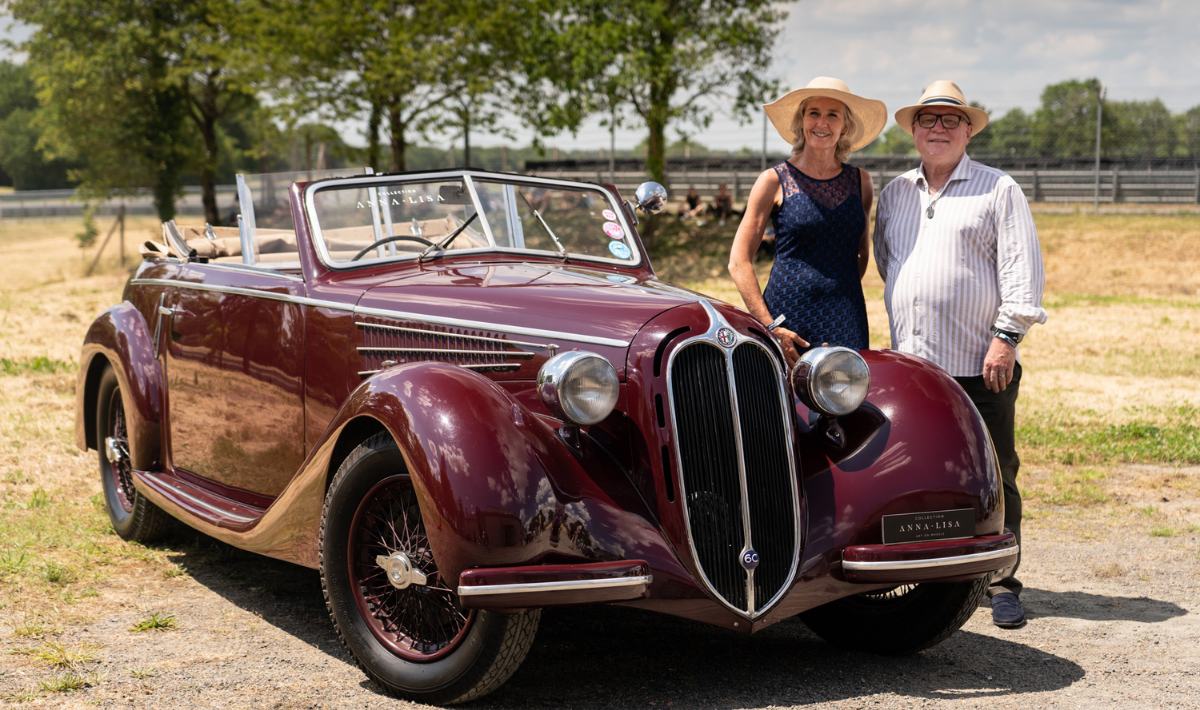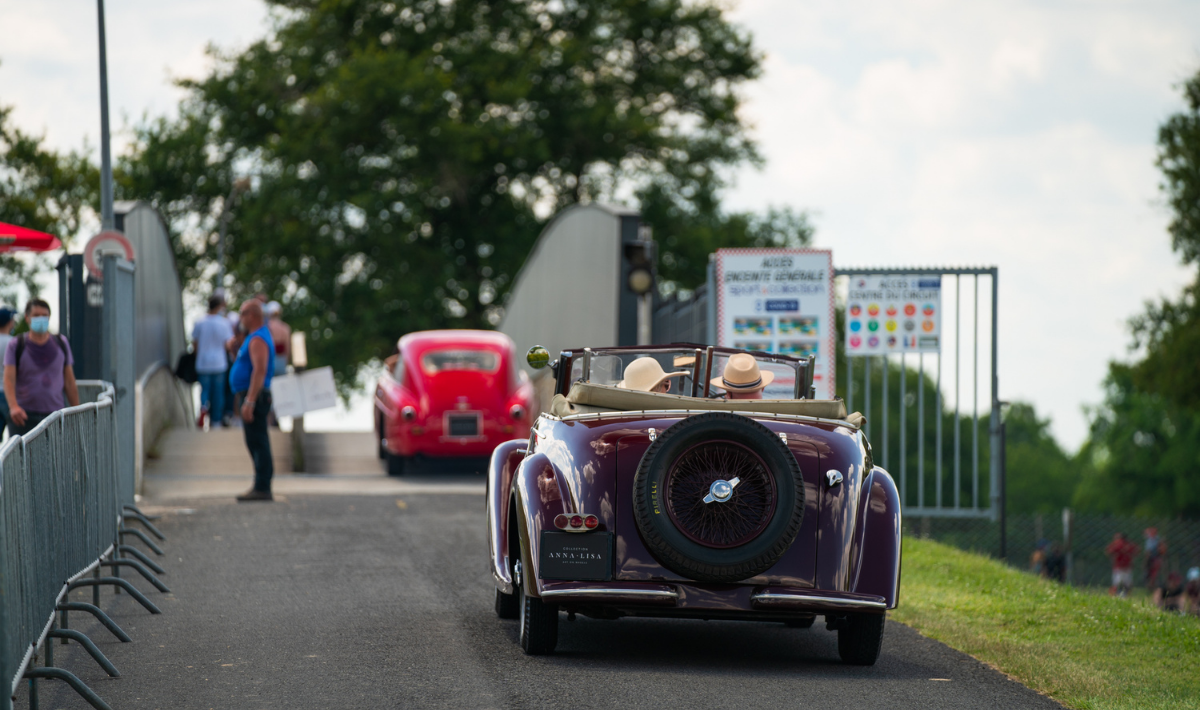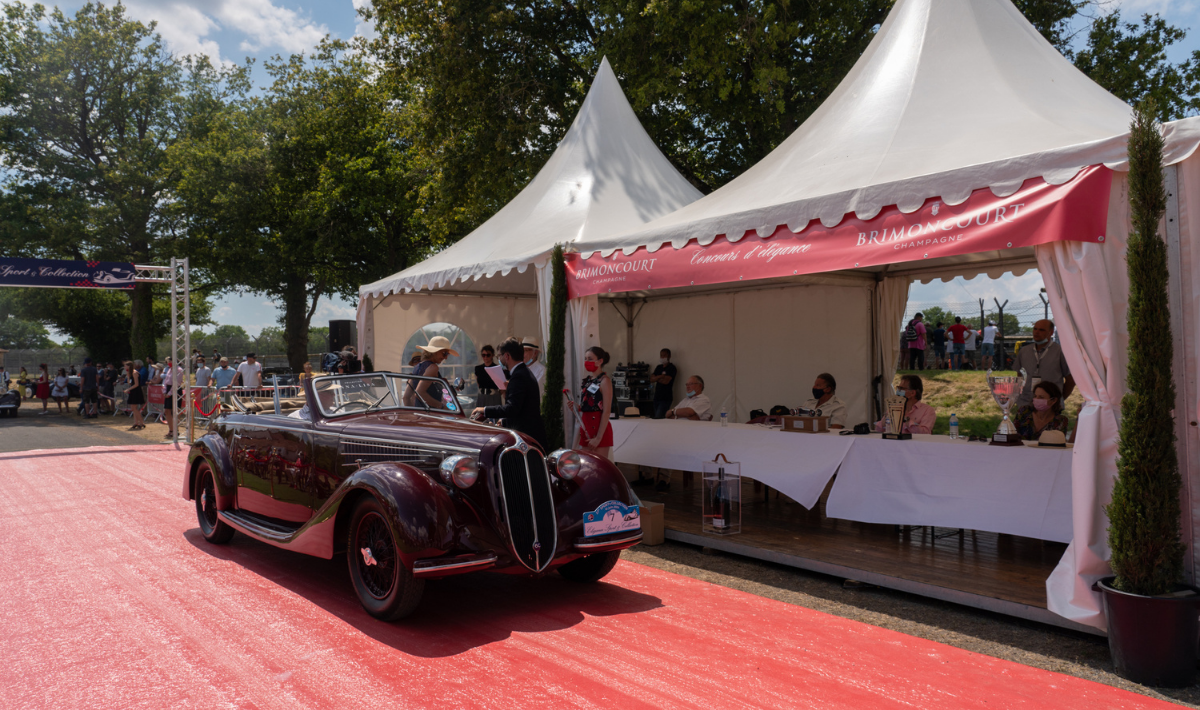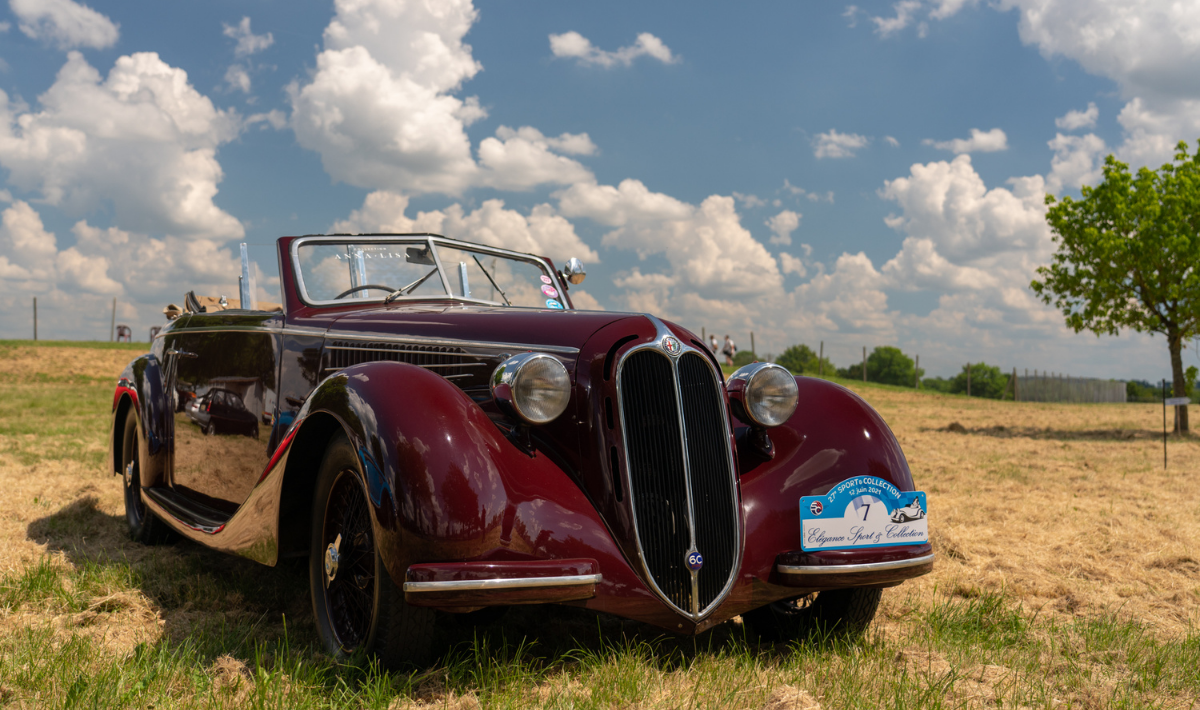Alfa Romeo 6C 2500 - 1939
— The early days of a superb lineage of cars —- Model One of the oldest Alfa Romeo 6C 2500 in the world, multi-awarded in concourses.
- Production A very rare car since only 86 Alfa 6C 2500 were produced in 1939
- History Sold new in Italy, with two known owners since new.
- Coachbuilder Long attributed to Touring, this 6C 2500 actually have been created by Boneschi with modifications made in period.
In the 1930s, Alfa Romeo was seen as the paragon of exceptional motorcars. The 6Cs & 8Cs especially were an absolute must when it came to style, performance and racing. These cars were then designed and built by the most renowned Italian coachbuilders. Launched in the mid Twenties, the 6C’s engine was an in-line six-cylinder that saw many evolutions, which culminated with the 6C 2.500, launched in 1939. The 6C 2.500’s career was no less impressive since it lasted 14 years!
The Alfa Romeo 6Cs : a line of cars that was born in the 1920s
The genesis of the Alfa Romeo 6C 2.500 can be traced back to 1925 when the Alfa Romeo 6C 1.500 was first launched.
The heart of the car, the engine, quickly distinguished this Alfa Romeo from the competition. Created by Vittorio Jano, the prolific engineer behind Alfa Romeo’s impressive racing successes in the 1920s and 1930s, the six and eight cylinders engines of the 6Cs and 8Cs offered unparalleled power and reliability. For instance, Alfa Romeo won the very first world championship in 1925, one year after its eight-cylinder engine was designed.
This quest for victories was also due to another man, Enzo Ferrari. His Scuderia, founded in 1929, had become Alfa Romeo’s true racing arm; his team even became the company’s official team in 1933. He put and end to his collaboration with the brand in 1939 before founding Ferrari in 1947.
Unfortunately, these prolific racing years were harmed by a lack of viable finances that lead the brand to fall under the Italian state’s control in 1933. Then, with the State’s very generous financial backup, Alfa Romeo pursued what it was known for: create and deliver the quintessence of bespoke, opulent and technically advanced cars.
The Twenties and Thirties saw a strong improvement in the engine capacities; indeed after the original 6C 1,500, Alfa launched a 1,750, a 1,900, a 2,300 before reaching 2,500 cc in 1939.
In this respect, the 6C 2.500 can easily be described as the last Alfa Romeo’s answer to Bentley, Rolls Royce and Bugatti cars.
In this respect, the 6C 2.500 can easily be described as the last Alfa Romeo’s answer to Bentley, Rolls Royce and Bugatti cars.
© Yann Geoffray Studio Grand Sud
The last car of the Alfa Romeo’s artisanal era
The long career of the 6C 2.500 witnessed important changes at Alfa Romeo, marking the end of an artisanal era of excellence and the beginning of a more industrial post-war era. Starting in 1939, it lasted a total of 14 years with an estimated total of 2.594 cars produced.
This change of era can be easily understood since Alfa Romeo factories in Portello were largely destroyed in 1944 by the Allied forces. Actually, the 6C 2.500 saved Alfa Romeo from ruin since it was the first car to be produced again in 1944 in very few units.
Born as an evolution of its predecessor, the Alfa Romeo 6C 2.300, with an optimised version of the double overhead camshaft ‘six’ where the displacement of 2,443cc was achieved by enlarging the bore of the 2300, the 6C 2500s took on very different forms with a lot of versions, for multiple vocations. Indeed the very first 6C 2.500 cars looked very similar to some of the 6C 2300.
Three versions were available depending on their power levels: first, the 87 hp of the Turismo, then the 95 hp of the Sport models versions, and last but not least, the 110 hp fed by three Weber carburettors of the Super Sport versions, the most desirable and successful 6C.
As always in the 6C’s extensive career, a wide variety of body styles were available. The long chassis versions included luxurious five-seater sedans, the six/seven-seater limousines and even a more surprising Coloniale. At the other side of the range, the sporty models were sold with a short chassis mostly as sedans, coupes and convertibles cars.
In true Alfa Romeo’s tradition, racing cars were on the menu. Both the race-designed corsa cars and the more “standard” ones aligned in competition achieved top results in line with the victories of the 6C 2.300 in the Mille Miglia and the Targa Abruzzo in Pescara in 1937. The 6C 2.500 remarkably won the long-distance race between Tobruk and Tripoli in 1939, followed by a second place in the 1940 Mille Miglia, before accumulating numerous successes after the war.
Equipped with independent suspensions and a synchronised gearbox, the Alfa Romeo 6C was an agile car. It could be described as “bourgeois” for the Turismo models, especially the long chassis versions and of course, much sportier for the Super Sport and competition versions. Only the chassis with its two longitudinal rails and diagonal crossbar was a little dated. Still, the 6C 2.500 Super Sport was seen as an absolute must-have car for its era with its combination of performance, style and comfort.
In this respect, the 6C line of cars has forever established itself as one of the most remarkable ones of the XXth century.the other side of the range, the sporty models were sold with a short chassis mostly as sedans, coupes and convertibles cars.
In true Alfa Romeo’s tradition, racing cars were on the menu. Both the race-designed corsa cars and the more “standard” ones aligned in competition achieved top results in line with the victories of the 6C 2.300 in the Mille Miglia and the Targa Abruzzo in Pescara in 1937. The 6C 2.500 remarkably won the long-distance race between Tobruk and Tripoli in 1939, followed by a second place in the 1940 Mille Miglia, before accumulating numerous successes after the war.
Equipped with independent suspensions and a synchronised gearbox, the Alfa Romeo 6C was an agile car. It could be described as “bourgeois” for the Turismo models, especially the long chassis versions and of course, much sportier for the Super Sport and competition versions. Only the chassis with its two longitudinal rails and diagonal crossbar was a little dated. Still, the 6C 2.500 Super Sport was seen as an absolute must-have car for its era with its combination of performance, style and comfort.
In this respect, the 6C line of cars has forever established itself as one of the most remarkable ones of the XXth century.
The ANNA LISA ‘s 1939 Alfa Romeo 6C 2.500 Sport cabriolet : a car with its own part of mystery.
The Alfa Romeo 6C 2.500 Sport presented here is one of the iconic Alfa Romeos of our collection. It has been for long attributed to Touring, both by experts, in its official Italian papers, numerous articles in 1980s car magazines articles or even in a document signed by Touring Superleggera. Actually, it is more likely that Boneschi has designed our car.
With its design typical of its era, a high grille and waistline, and headlights not integrated into the wings, our car is truly reminiscent of the shape of the 6C 2.300. It was very probably modified for ceremonial uses as the optional separation chauffeur’s additional window suggests it.
The car still has its original soft top in overall good condition. Many specialists believe our car is one of the oldest Alfa Romeo 6C 2.500s in existence in the world today. A thorough historical research is underway and will certainly reveal other facets of this extraordinary car.
In the last years, we have exhibited this car at Epoq’Auto vintage car fair in Lyon and in Retromobile. It has also received the “Prix du Val de Vienne” award during the first Concours d’Elegance organised by Sport & Collection with the FFVE (“Federation Francaise des Véhicules d’Epoque”). It also received the second prize in its category at the Concours d’Etat et d’Elegance de Biarritz during “Journées du Patrimoine” 2021.
This 1939 Alfa Romeo 6C 2500 is a wonderful testimony of how excellent was Alfa Romeo in these times. We had a lot of emotion to bring it out after a long period of non-use. We are very keen to exhibit it, to drive it but also to deepen its history.
© Ugo Missana
